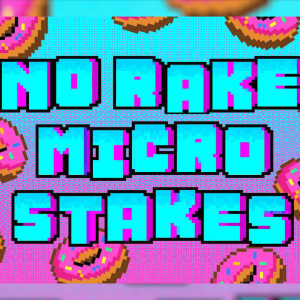Tips From Our Poker Cheat Sheet
9 years ago

10 Jan
Poker is easy! We all said that at first after we learned the very basics of the game. However, as we got more and more in-depth, poker got a lot more complicated. Things like EV, red line, cbetting, double-barreling, 3betting, floating, pot odds, implied odds, and reverse implied odds can get any wannabe poker professional confused to the point that he can’t see the forest for the trees.
So how about just taking a step back and try to simplify the game like we once thought it was? Let’s just try to put all these poker terms into perspective and come up with a simple plan that can help us get over the hump. Still can’t think of anything truly useful? Don’t worry, like always, we’ve got you covered. Presenting the ultimate poker cheat sheet:
1. Limping Is Weak
This is probably the most important tip from our poker cheat sheet. Why? Because no matter where you play - live or online - what you play - cash, MTT, SNG, Texas Holdem, Omaha - this is how you’ll spot the weaker players in the first place. And to make money, you’ll have to play against them. Let’s face it: everyone who read some basic strategy about the game of poker, knows how important it is to be aggressive and to start preflop with a solid raise. If an opponent doesn’t apply this very basic rule, then he must be ignorant, he probably didn’t read anything poker-related so in all probabilities, he plays weak.
So what do we do when facing a limp? If we have a solid hand, we’ll definitely raise, try to isolate him without any other good player chasing the pot. Since he limped, he’ll be inclined to call our raise even though he has a sub-mediocre hand; he invested some money in the pot and he’s not likely to get bullied out of it. Which means we’ll have a huge hand advantage post-flop.
What about limping behind? That’s not an option because someone will eventually raise and we’ll become the weak player, forced to call because we’ve already invested money in the pot or fold thus losing our passive investment.

2. Ship It Preflop With The Top 2.5% Of The Hands
Since we are talking about No Limit Texas Holdem, the top 2.5% of the hands are pocket Aces through Queens (included) and Ace-King.
There are many though who say that pocket Queens and Ace-King aren’t that profitable to go all-in preflop so only about 1% is actually a more fitting advice for today’s games. But we believe pocket Queens and Ace-King still have tons of value at micros and even low stakes. Players are more likely to make mistakes - overvalue their medium pocket pair or Ace-Queen and Ace-Jack - preflop that postflop - when they usually are much more cautious - so why not taking advantage of those mistakes?
Of course, this would be your default strategy when you don’t have many reads on your opponents. If you are playing against a nit, Queens and the Big Slick are usually dominated so go all-in only with the top 1%. If there is a multi-way pot and there is a 3bet and 4bet in front of you, then you should seriously think of folding everything except the nuts - pocket Aces and Kings in our case.
At the higher stakes though, this tip isn’t that straightforward. You could actually go all-in with less or nit up to only AA and KK depending on the dynamic and your history with the players at the table.

3. Abuse The Button
If you have the ultimate position in Holdem and Omaha, don’t be afraid to loosen up. Blind stealing has become a very important part of the poker game nowadays whether you play cash games or tournaments, micro or high stakes. Why is that, you may wonder?
First of all, there are still many who play much too tight and give up their blinds without a fight. They may be uncomfortable playing out of position so they elect not to. But why?
If you take a look into poker tracking softwares like Holdem Manager and filter your hands by position, you’ll notice that the blinds are in fact where you lose the most money, given a decent volume. Indeed those tight players have a valid reason not to defend their blinds because they could end up losing even more so they just try to minimize their loses. The most money in poker are made IN POSITION so why not try to maximize your profit from the ultimate position?

4. Cbet Only With Outs
Let’s just forget about dry and drawy boards for a moment and let’s just think bigger, not just flop but POSTFLOP. Of course, if you have an opponent folding 80% after a cbet, well you should definitely abuse him like there’s no tomorrow. But we are not talking about that particular player. We’re talking about the average one. So let’s try to put board texture as a reason to cbet aside and start thinking about value. Don’t just cbet with complete air and give up on the turn if called, try to cbet only on boards you can improve and thus double-barrel on the turn. Do it on boards with a backdoor flush draw or straight draw, a.k.a. situations when you have live overcards that can actually turn your air into a decent hand with showdown value.
For example, think of the following situation: you hold KJ of hearts and the flop is Q82 with one heart. Imagine if you cbet and how often you can double-barrel on many turns with a heart, any Ten, any King, and even any Ace. This is how an actual profitable cbet works in poker. In order to be successful you must have a plan and think about your hand on multiple streets. If you think solely on the flop, then your cbet will become ineffective. Remember, we don’t cbet on the flop only to make our opponent fold or extract value, we also cbet to take the pot on later streets.
5. A Raise On Later Streets Is A Sign of Huge Strength

Thank God for Andrew ‘balugawhale’ Seidman and his great book called ‘ Easy Game.’ Seidman was actually the first player to verbalize this priceless poker tip: if you are raised on the turn, then the raiser usually has the nuts. We can even expand this rule on the river. Usually if you are being raised on the turn and river, get away unless you have the nuts or something very close to it. That means top pair top kicker isn’t of any use anymore. That means two pairs are usually behind. And yes, that means your set may be good enough to throw it into the muck, especially if the board is filthy-wet.
Even the degenerates play much more cautiously on later streets and avoid bluffing with air on the turn - on the river though they may be inclined to bluff you off the pot with their busted hand (there aren’t many players like that though if you climb up the poker ladder). In other words, nobody makes that many huge mistakes on the turn and river, the most are made preflop and on the flop. So think twice before calling a raise on the turn or river because you may be in a world of trouble.
Do you have a poker cheat sheet? Then share it with the rest of the poker community in the comment section below.







Comments
You need to be logged in to post a new comment